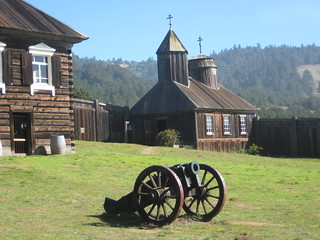California’s clean air and water, pristine coastline, wild open spaces and public health protections don’t happen by accident. They happen because champions for the environment run for office, and once they’re elected, they work to pass laws that protect our natural resources and improve our quality of life.
Today the California League of Conservation Voters released our annual California Environmental Scorecard. The Scorecard is the behind-the-scenes look at the battle to protect the Golden State’s natural legacy and public health, and reveals how the governor and members of the state legislature voted on critical environmental proposals in the 2010 legislative session. Take action and let your legislators know what you think about their 2010 scores: Visit http://www.ecovote.org/
The story of the 2010 Scorecard is as much about how the environmental community stopped multiple attacks on the environment as it is about how we passed strong laws that protect our quality of life. But the story doesn’t end there, because we expect more attacks in 2011 that falsely claim we need to sacrifice the environment in order to improve the economy.
Emboldened by the tough economic climate, anti-environmental legislators introduced dozens of so-called “regulatory reform” bills in 2010 in an attempt to weaken environmental protections. The good news is that, with the help of environmental champions in the state Senate and Assembly, CLCV and our allies successfully defeated the bills that posed the most serious threats to the environment and public health. At the same time, environmental advocates were able to deliver several important proposed laws to Governor Arnold Schwarzenegger’s desk, including bills dealing with energy storage, recycling, water conservation, pesticides, clean energy jobs, and oil spill prevention.
Schwarzenegger’s 2010 score of 56% factored into an average lifetime score of 53 percent over his seven years as governor. The governor received national recognition for leadership on environmental issues. However, he leaves office with a mixed legacy, having championed some issues-notably, bold solutions to climate change-and having proven less reliable on others, including protecting public health and state parks.
How did your legislator perform on the environmental community’s priority legislation to protect the environment and public health? Learn your legislators’ scores and then let them know what you think! (More after the jump).
2010 California Environmental Scorecard Highlights:
Governor Schwarzenegger 56% (leaves office with 53% average score)
Senate average: 59%
Senate Democrats: 91%
Senate Republicans: 6%
Senators with 100% score: 12
Highest Scoring Senate Republican: Blakeslee, 21%
Lowest Scoring Senate Democrat: Correa, 30%
Assembly average: 64%
Assembly Democrats: 94%
Assembly Republicans: 7%
Assemblymembers with 100% score: 30
Highest Scoring Assembly Republican: Fletcher, 19%
Lowest Scoring Assembly Democrat: Huber, 43%
Perfect 100%:
Senators: Alquist, Cedillo, Corbett, DeSaulnier, Hancock, Kehoe, Leno, Liu, A. Lowenthal, Pavley, Steinberg, Yee.
Assemblymembers: Ammiano, Bass, Beall, Blumenfield, Bradford, Brownley, Carter, Chesbro, Coto, de Leon, Eng, Evans, Feuer, Gatto, Hayashi, Hill, Huffman, Jones, Lieu, B. Lowenthal, Monning, Nava, J. Pérez, Ruskin, Salas, Saldaña, Skinner, Swanson, Torlakson, Yamada.
The California Environmental Scorecard is an important tool for environmental voters, who for nearly 40 years have helped CLCV deliver on our mission to hold elected officials accountable to their campaign promises to protect California’s families and natural heritage.
With the introduction this year of a new interactive, online Environmental Scorecard, CLCV is making it even easier for voters to communicate with their elected officials about their environmental performance.
Please know the score and take action today! Visit http://www.ecovote.org/
 Russian settlement was one of first European Settlements along the northern coast
Russian settlement was one of first European Settlements along the northern coast
